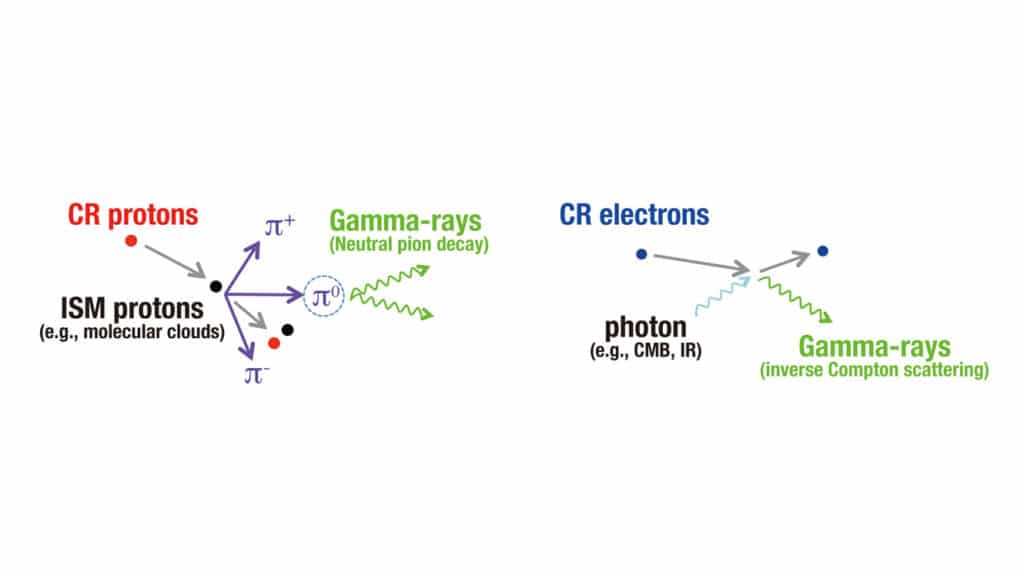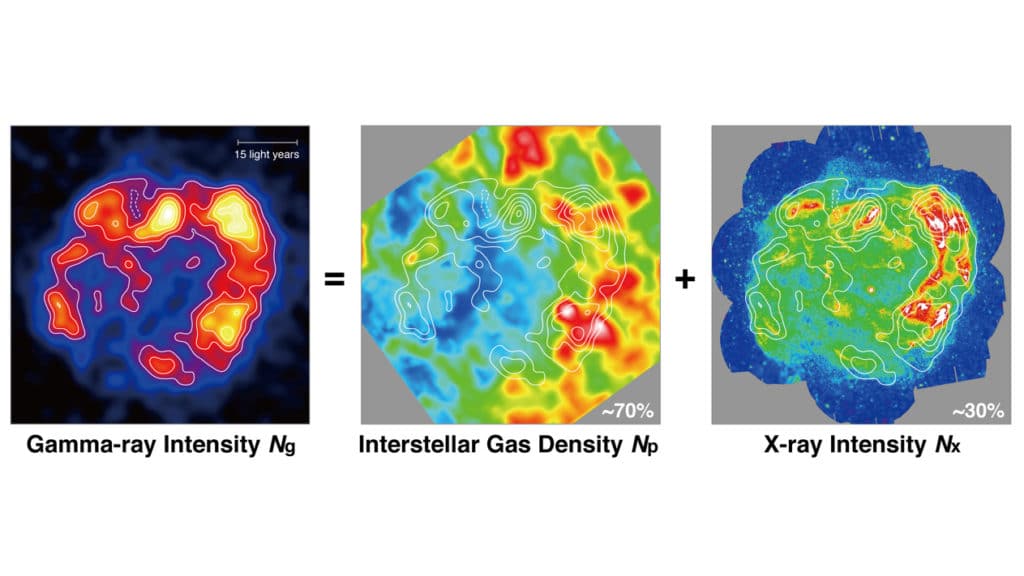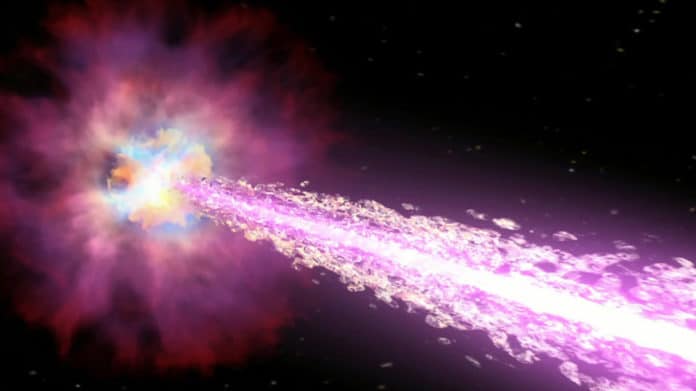Cosmic rays trigger the chemical evolution of interstellar matter. That’s why understanding them is essential to understand the evolution of our Galaxy.
Astronomers believe that the supernova remnants accelerate cosmic rays in our Galaxy. The rays then travel to earth at the speed of light. Recent gamma-ray observations have revealed that many supernova remnants emit gamma-rays at teraelectronvolts (TeV) energies.
If protons generate the gamma rays, verifying the supernova remnant origin of cosmic rays would be easier. However, gamma rays are also produced by electrons. Hence, it is necessary to determine whether the proton or electron origin is dominant and to measure the ratio of the two contributions.

In a new study, astronomers successfully quantified cosmic rays’ proton and electron components in a supernova remnant. They found that the relativistic protons are the reason for almost 70% of very-high-energy gamma rays emitted from cosmic rays.
Astronomers performed novel imaging analyses of radio, X-ray, and gamma-ray radiation. This is the first time that the amount of cosmic rays produced in a supernova remnant has been quantitatively shown. This is an epoch-making step in the elucidation of the origin of cosmic rays.
The results of this study provide compelling evidence of gamma rays originating from the proton component, which is the main component of cosmic rays, and clarify that Supernova remnants produce galactic cosmic rays.
It is well known that the intensity of gamma-ray from protons is proportional to the interstellar gas density obtained by radio-line imaging observations. On the other hand, gamma-rays from electrons are also expected to be proportional to X-ray intensity from electrons. Therefore, they expressed the total gamma-ray intensity as the sum of two gamma-ray components, one from the proton origin and the other from the electron origin. This led to a unified understanding of three independent observables.

This method was first proposed in this study. As a result, it was shown that gamma rays from protons and electrons account for 70% and 30% of the total gamma-rays, respectively.
This is the first time astronomers have quantified the two origins. They also demonstrate that gamma rays from protons are dominated in interstellar gas-rich regions, whereas gamma rays from electrons are enhanced in the gas-poor region. This confirms that the two mechanisms work together and support previous theoretical studies’ predictions.
Emeritus Professor Yasuo Fukui at Nagoya University said, “This novel method could not have been accomplished without international collaborations. It will be applied to more supernova remnants using the next-generation gamma-ray telescope CTA (Cherenkov Telescope Array) in addition to the existing observatories, which will greatly advance the study of the origin of cosmic rays.”
Journal Reference:
- Yasuo Fukui, Hidetoshi Sano et al. Pursuing the Origin of the Gamma Rays in RX J1713.7−3946 Quantifying the Hadronic and Leptonic Components. DOI: 10.3847/1538-4357/abff4a
